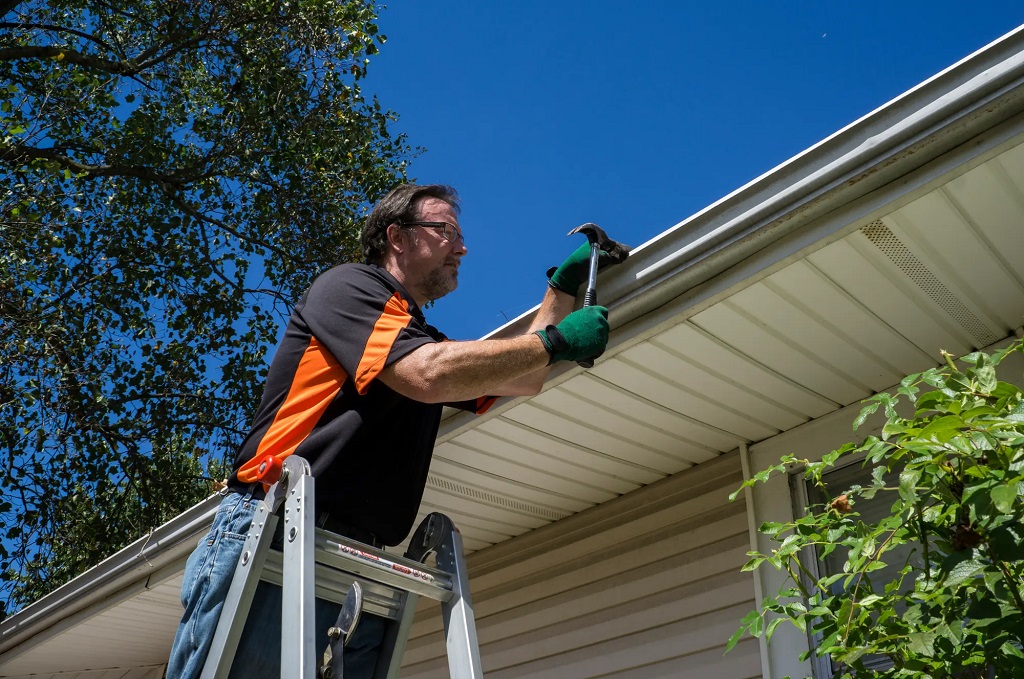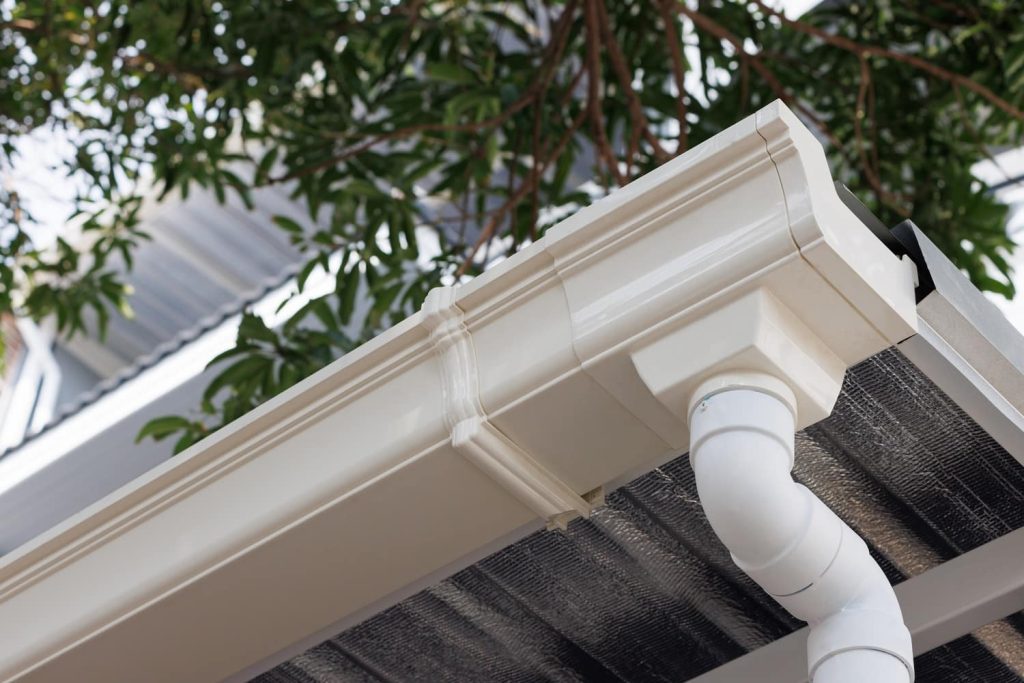Your gutters, though often overlooked, play a crucial role in protecting your home. They efficiently channel rainwater away from your roof, foundation, and siding, preventing costly water damage. This guide empowers you, the homeowner, to become a Gutter Guru, understanding the importance of gutters, different gutter systems, maintenance tips, and potential troubleshooting solutions.
1. Why Gutters Matter: Protecting Your Home from the Elements
Without properly functioning gutters, rainwater can wreak havoc on your home. Here’s why gutters are essential:
- Foundation Protection: Gutters divert water away from your foundation, preventing cracks, leaks, and potential structural damage.
- Basement Safeguard: By directing water away from the foundation, gutters help prevent basement flooding, especially crucial in areas with heavy rainfall.
- Siding Savior: Water cascading down your siding can lead to rot, mold growth, and peeling paint. Gutters prevent this by channeling water away from the siding material.
- Landscaping Longevity: Uncontrolled water flow can erode your landscaping and damage walkways. Gutters ensure proper water drainage, protecting your landscaping investment.
2. Gutter Systems 101: Choosing the Right Fit
There are various gutter systems available, each with its advantages and considerations:
- K-Style Gutters: These are the most common type of gutter, offering a sleek and stylish look. They are available in various materials, including aluminum, vinyl, and steel.
- Half-Round Gutters: These traditional gutters have a rounded profile and are often seen in older homes. They are typically made of copper or galvanized steel.
- Fascia Gutters: These gutters are integrated into the fascia board, the board that runs along the edge of your roof. They offer a clean and streamlined look but can be more challenging to install.
3. Material Matters: Selecting the Perfect Gutter Material
The material you choose for your gutters impacts durability, cost, and aesthetics:
- Aluminum Gutters: A popular and affordable choice, aluminum gutters are lightweight, rust-resistant, and come in various colors. However, they can dent easily.
- Vinyl Gutters: Another cost-effective option, vinyl gutters are lightweight, easy to maintain, and come in various colors. However, they may become brittle in extreme weather conditions.
- Steel Gutters: These gutters offer superior durability and are resistant to dents. They come in galvanized steel or coated steel options. However, steel gutters are more expensive than aluminum or vinyl and can rust if not properly coated.
- Copper Gutters: The most aesthetically pleasing option, copper gutters offer a classic look and exceptional durability. However, they are the most expensive choice and require regular maintenance to prevent tarnishing.
4. Size Matters: Choosing the Right Gutter Size
The size of your gutters should be adequate to handle the amount of rainfall in your area. Here are some general guidelines:
- Smaller Homes: For smaller homes or areas with moderate rainfall, 5-inch gutters are typically sufficient.
- Larger Homes or Heavy Rainfall: For larger homes or areas with heavy rainfall, 6-inch gutters are recommended to handle the increased water volume.
5. The Installation Equation: DIY or Professional Help
Installing gutters requires some technical knowledge and physical ability. Here’s how to decide between DIY and professional installation:
- DIY Installation: If you’re comfortable with home improvement projects and have the necessary tools, DIY gutter installation might be a viable option. However, ensure you have a clear understanding of proper installation techniques to avoid leaks or improper drainage.
- Professional Installation: For a guaranteed secure and functional gutter system, consider hiring a qualified roofing contractor experienced in gutter installation. This is especially recommended for complex rooflines or multi-story homes.
6. Gutter Guru Maintenance: Keeping Your System Flowing Freely
Regular gutter maintenance is crucial to ensure proper drainage and prevent clogs. Here are some key maintenance tips:
- Seasonal Cleaning: Clean your gutters at least twice a year, ideally in the spring and fall. Remove leaves, debris, and any nesting materials that can block the flow of water.
- Downspout Maintenance: Ensure your downspouts are properly directed away from your foundation. Extend them at least 4 feet away from your house to prevent water pooling near the foundation.
- Inspect for Damage: Regularly inspect your gutters for any signs of damage, such as leaks, cracks, or sagging. Address any issues promptly to prevent further problems.
7. Troubleshooting Common Gutter Problems: Be a Drainage Detective
Even with proper maintenance, gutters can encounter issues. Here’s how to identify and address common problems:
- Leaking Gutters (continued): Leaking gutters can be caused by clogs, improper installation, or damaged sections. Clean out any debris and ensure the gutters slope slightly towards the downspouts. If the leak persists, you might need to reseal joints or replace damaged sections.
- Clogged Downspouts: Downspouts can become clogged with leaves, debris, or even rodent nests. Use a plumber’s snake or a high-pressure hose to clear the blockage. Consider installing downspout guards to prevent future clogs.
- Sagging Gutters: Over time, gutters can sag due to improper installation, loose hangers, or excessive weight from debris. Re-secure loose hangers or reinforce the gutter system as needed.
- Overflowing Gutters: Overflowing gutters often indicate insufficient gutter size or improper slope. Consider upgrading to larger gutters if necessary, or adjust the slope slightly towards the downspouts to improve drainage.
8. Beyond the Basics: Additional Gutter Considerations
Here are some additional factors to consider for a comprehensive gutter system:
- Leaf Guards: Installing leaf guards over your gutters can significantly reduce the need for frequent cleaning by preventing leaves and debris from entering the system.
- Heat Tape: For areas prone to freezing temperatures, consider installing heat tape in your gutters to prevent ice dams and ensure proper drainage during winter.
- Underground Drainage System: For a more concealed drainage solution, consider installing an underground drainage system that directs water away from your foundation.
Related: Smart Home Hacks You Didn’t Know You Needed (but Totally Will)
The Final Drip: Becoming a Gutter Guru
By understanding the importance of gutters, choosing the right system, and practicing proper maintenance, you can become a Gutter Guru, ensuring your home is well-protected from the elements. Remember, a properly functioning gutter system is a crucial investment in your home’s longevity and value. So, take charge of your roof drainage system and keep your home flowing freely!




